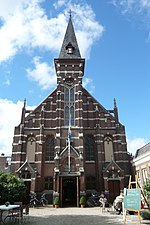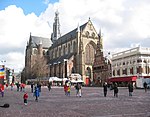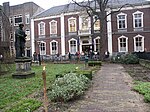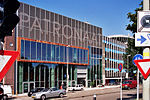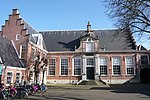Coomanshof

The Coomanshof is a former hofje in Haarlem, Netherlands, on the Witte Heren straat. It was named the "mercerie" or cramersneringhe after the local merchant's guild that existed from 1407. The small guild house dates from 1644. The hofje that grew around it is typical of the type of occupational hofjes such as the Brouwershofje that grew out of the local Brewer's guild. The patron saint of the merchants was Saint Nicholas, also the patron saint of Amsterdam. When the guilds were disbanded under Napoleon in 1798, the hofje was rented out until 1854 when it was sold. When the local head of the archives Adriaan Justus Enschedé bought the property in 1871, he demolished the eleven small hofje houses but kept the guild house as a folly for his garden. His main home was on the Zijlstraat. Enschede also found the original gable stone and had it reinstalled in 1871 above the doorway in the Witte Herenstraat.
Excerpt from the Wikipedia article Coomanshof (License: CC BY-SA 3.0, Authors, Images).Coomanshof
Witte Herenstraat, Haarlem
Geographical coordinates (GPS) Address Nearby Places Show on map
Geographical coordinates (GPS)
| Latitude | Longitude |
|---|---|
| N 52.383611111111 ° | E 4.6316666666667 ° |
Address
Frans Loenen Hofje
Witte Herenstraat 24
2011 NS Haarlem (Haarlem)
North Holland, Netherlands
Open on Google Maps


